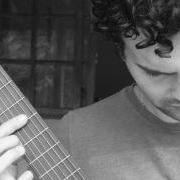Leaderboard
Popular Content
Showing content with the highest reputation on 09/21/2025 in Posts
-
Hello everyone! I composed a waltz for piano during the weekend. I wanted it to be "easy" to play so I composed it with an accompaniment that does not need jumps or the use of the pedal. It is still hard to play for me, so, while I practice, I leave it here with my initial live performance until I can play it better (it would sound awful with midi). My main concerns is always with the form, as I am not sure how do transition best between sections, when to repeat things or let them go, etc. So any feedback about that is more than welcome. The piece is in the form ABCBA. A is the main theme in A minor, which is repeated at the end. It is a frantic and agitated theme (and needs to be played rubato). B is a modulatory section and needs to be played without rubato and with the melody "singing". It is based on a long chromatic descending bass line so it is highly chromatic and there might be many compositional mistakes in this section. While it is the easiest section, I have troubles played it beautifully. You can listen to the only time I played it as well as I wanted in 2:01 from the audio. C is a simple lyrical theme in A major. The audio is really bad, it is based on different recordings so the quality of the sound changes a little. When I practice everything and have a finalized score and audio rendition I will update it! Hope you like it and any feedback is more than welcome! Thank you!2 points
-
Here is one of my favorite sonatas in binary form, inspired by the colossal Scarlatti, who is also the reason I started composing music systematically over the past two years. It’s a blend of Scarlatti’s style but also includes elements from other classical composers. A very playful sonata with quite a few unexpected modulations that make it even more humorous… I hope you enjoy it.1 point
-
In an effort to actually get something done, I challenged myself to write and record a little piece in two hours; behold the result! The recording definitely got put off until the end. It's pretty out of tune/bad quality, but, I hope, bearable to listen to 🙂 Any and all feedback is greatly appreciated!1 point
-
I wrote this piece in 2018, probably for some composition competition.1 point
-
Thank you for your feedback @PeterthePapercomPoser! The clarinetist who played it is named Jacob Wolf. He only made a home recording; Unfortunately, the piece was never premiered in any recital or concert. I don't remember which competition I entered this piece in, but I'm sure it didn't win any awards :).1 point
-
1 point
-
Happy Autumn to all! So... turns out, due to a miscommunication, I won't be writing a mini-bassoon concerto after all. Instead they want me to write a miniature concerto for violin and chamber orchestra. I've started sketching it out here; though I'm still at a very early stage. I'm thinking three movements; though the time limit is 5 minutes total. No prizes for guessing which composer inspired this. (I think it's rather obvious!) Those who guess the right answer can tell me if it's sounding too similar to the original work? Am using the chord sequence function in MuseScore to sketch out my harmonies. Only discovered this recently, and am finding it somewhat useful. Wonder if anyone else has tried this out? Apparently it works even better with Kontakt 7 and Sonuscore orchestral elements; but I haven't got round to installing those yet.1 point
-
Good guess Peter! It was inspired by Vivaldi's famous A minor violin concerto (RV356). I've even lifted a fragment of one phrase from it. In that work, he frequently reinforces the violin solo line with the entire violin section: so you have an alternation of texture. I haven't yet decided which phrases will be played solo: so I've left the whole part on the 1st violin section for now. (That was an additional clue this was based on Vivaldi!) The concerto RV356 crams three movements into c.6 minutes: so I'm hoping to do the same thing with my piece. The chord symbols can be used to create an arpeggiation in the low strings, along with all sorts of interesting preset textures using Sunuscore's Orchestral Elements. So that was my main reason for using them. (I've tested this out now, and it works quite well.) It also allows the harmonies to be quickly and easily changed. Theres a You Tube video all about it here, along with a score video of the Vivaldi:1 point
-
Hello, all! This as a full arrangement of Binary Data IV. Binary Data IV. is a piece by Alfonso Peduto that uses real-time physical delays on a piano to play incredibly fast arpeggios and descending lines. As such, the original song does not have one individual leading melody, which led me to write a unique melody for my orchestration. Thank you, hope you enjoy!1 point
-
Hey @Alex Weidmann! I think I personally wouldn't use the chord sequence function in Musescore (if I was composing on the computer) because it would prevent me from trying to imagine what kind of stuff I could use to fill the sonic spaces of the music. Also, later, when I would want to add more parts to the piece I would probably have become accustomed to the harmony and I'd become inflexible to use different harmonic/accompanimental ideas. In general though, the reason why I prefer nowadays to write my music on paper is because I found that being able to immediately hear what I'm composing was not conducive to composing. Like in creative writing - it's like the difference between the brainstorming or quick-writing mindset and the editing and proofreading mindset. In the brainstorming or quick-writing mindset you just throw out all ideas no matter how bizarre or impractical - the goal is to just keep writing and keep the pencil moving. In the editing and proofreading mindset you weed out all the little mistakes, grammar, punctuation, spelling etc. If I compose music on the computer the two mindsets interfere with each other too much. When I'm using Musescore I'm almost always already in the editing/proofreading mindset. It's because hearing my music immediately puts me in that editing/proofreading mindset before I even have a chance to complete my musical thoughts as they were meant to be conceived. It's distracting for me. But this has turned into a rant. I can't tell what piece this was inspired by - maybe something by Vivaldi or Bach? Some of the melodic ideas are interesting! The reason why I guessed Vivaldi or Bach is because of the Baroque-like sequences you employ in some parts. But where's the soloist? Thanks for sharing!1 point
-
Hello @dhslamas! Glad to see that your really old pieces still make it to completion! I don't usually like pieces for a solo instrument because it's easy for them to degenerate into exercise-y shows of skill over actual musical content. But this is very interesting rhythmically, harmonically and melodically! The performance of course brings much to the table - did you play this yourself? Great job to whoever played it! It would be really interesting to try and orchestrate this little etude in a Stavinsky-style! What competition was this written for? Well done and thanks for sharing!1 point
-
Choir Intro.pdf Choir Intro.mp3 Attached is the score and audio recording of the first few bars of a symphony that I've been working on. I'd just like some feedback as to whether it sounds like something out of the romantic period - that's the style that I'd like to emulate the most. I love Rachmaninoff, Mahler, Wagner, Tchaikovsky, all the greats, Mahler particularly standing out for me. I've made no lyrics to the piece, but it will follow a sombre, relating to death, and resistance against death kind of mood. The opening melody, characterized by the rising sixth, falling seventh, then back up a semitone to the dominant, is the main theme, and is repeated throughout the symphony. I'm just looking for any kind of feedback on how I can make this more classical.1 point
-
Hey @Markus Boyd! What a brooding introduction in A minor! The transition to the main theme in A major seems a bit wonky though. The chord four bars before the Allegro begins (I can't see the bar number in the video) is a German 6th of V (a C, E, G, A#). In the classical style, this chord should resolve to V 6/4 or II, tonicizing the V - E major. Maybe you could draw out the transition into some kind of longer macro-tonal scheme to arrive at A major more smoothly? It really seems sudden and tacked on right now. Especially since that high E in the Flute goes to D# before resolving back to an E on the downbeat of the Allegro .. it definitely sounds like it wants to resolve to V. But I really like the style of this classical symphony so far! It's not quite Mozartean nor Haydnesque .. it's all your own with an idiosyncratic use of space in the orchestration that neither of the aforementioned composers practiced! I especially like the Cello and Viola line in bars 52 - 55. Another bar that bothers me is 99. Correct me if I'm wrong but it seems like the chord there is a suspended 7th chord? D, Fx, A, C is how I see it spelled which makes a D suspended dominant 7th chord. I am not sure how I would resolve this chord. Perhaps I expect the chromatic motion in the Bassoon to go from D#, to D down to C#? But overall this is coming along quite nicely! I'm looking forward to hearing the development section next! Great job and thanks for sharing!1 point
-
If you registered after July 17th, 2022 then you're set to follow your own content automatically.1 point

.thumb.png.8b5b433a341551e913a34392660bc95b.png)

